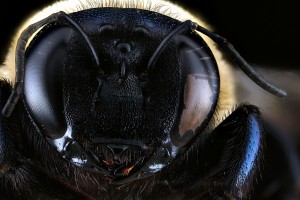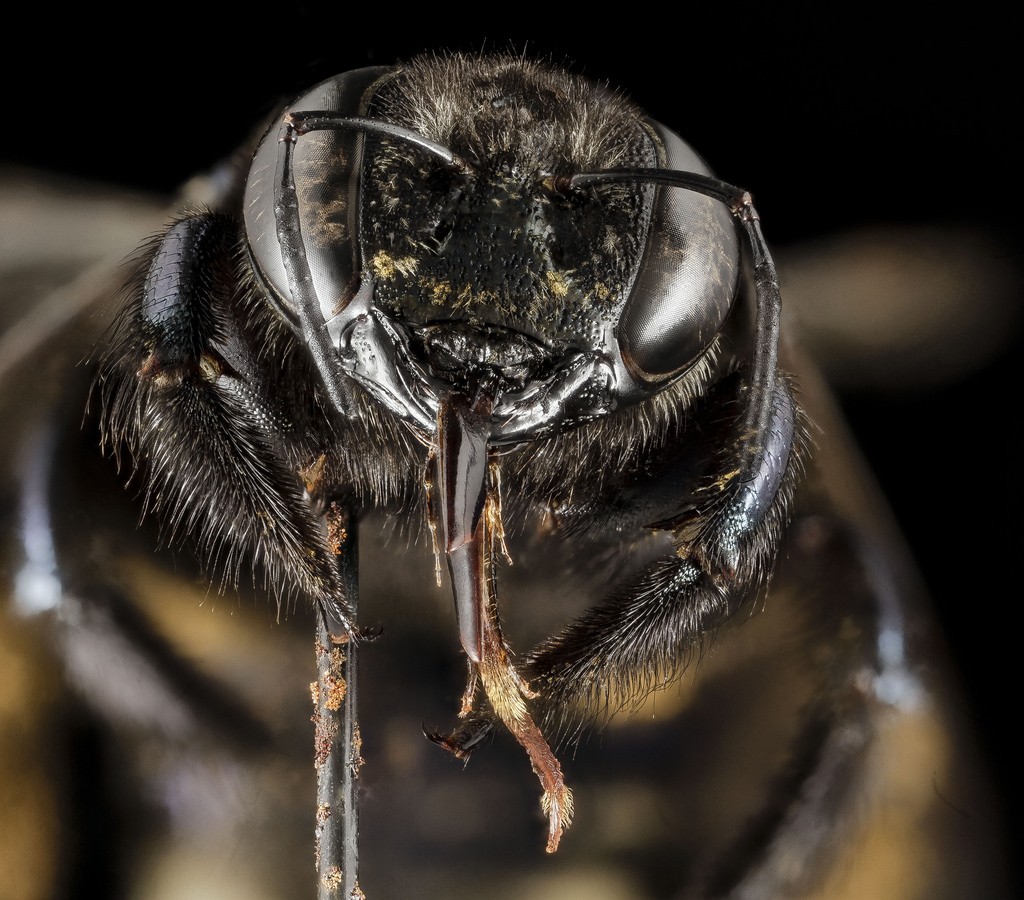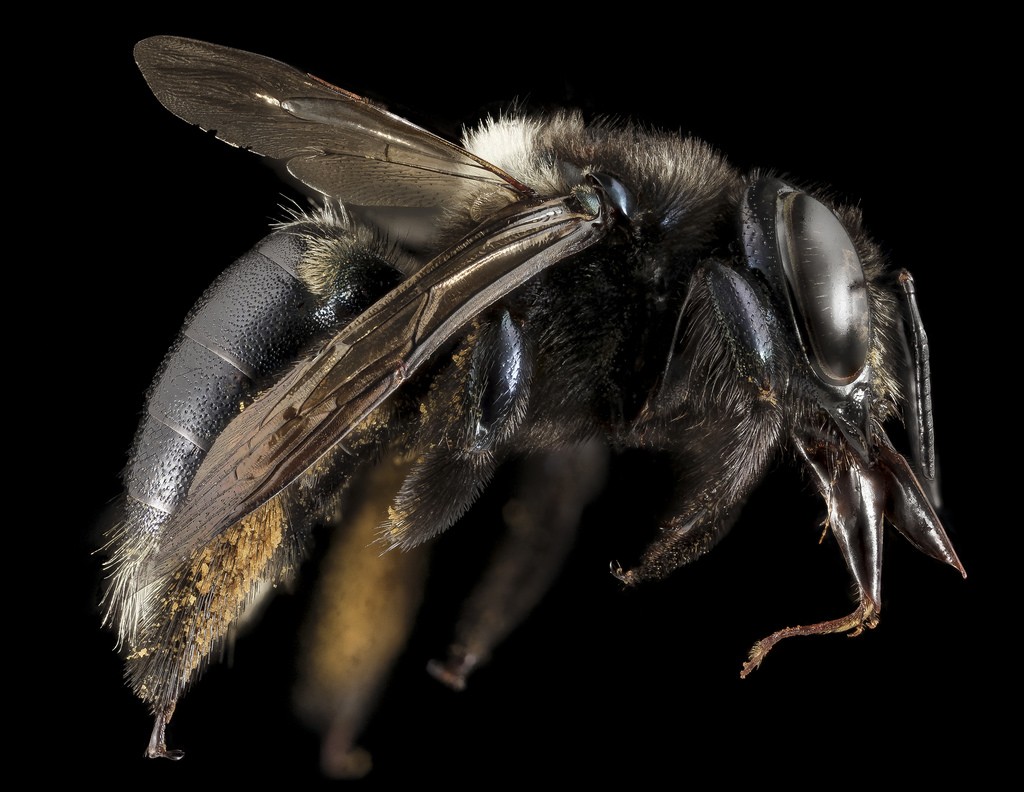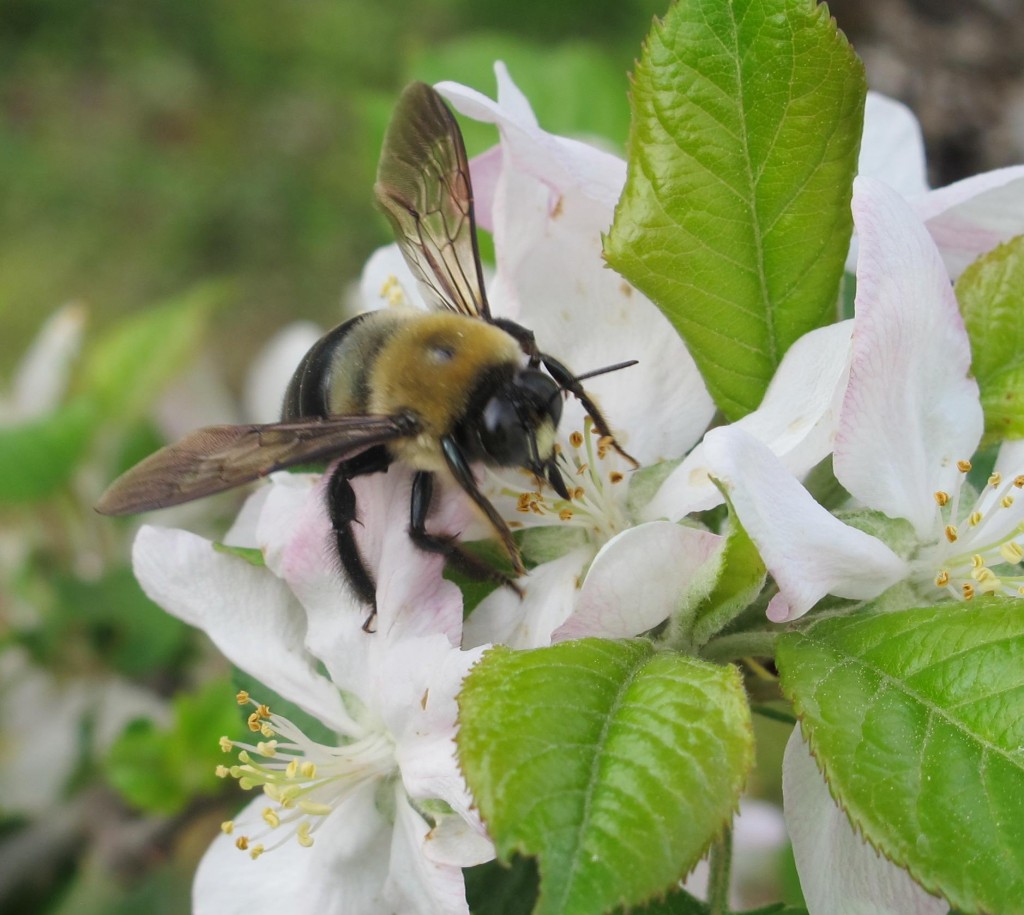Large Carpenter Bee (Genus Xylocopa)
Size: Very Large (14-19 mm) {Size Comparison – the average honeybee is 13 mm}
Color: Black body with yellow and black dense hairs on head and thorax; Abdomen is bald
Type of Flight: Slow and lumbering (without fear of humans)
Distinguishing Characteristics:
(1) Bumble-bee size, but with bald and shiny abdomen
(2) Large, thick body with a wide head that is much larger than that of the bumblebee.
(3) Male carpenter bees have yellow to white coloring covering the bottom half of the face; while female faces are all black)
(4) Carpenter bees excavate large (almost 1 inch) holes in dead or untreated wood to use as nesting sites. (This trait often results in carpenter bees being labeled a pest)
Abundance in Georgia: Common
Typically Found in Georgia: March– October (Large Carpenter Bees are some of the first bees to emerge in Spring)
Pollination Value: Very High
Note: Large Carpenter Bees are known to nectar rob from small tubular flowers that face-downward.
(Nectar robbing involves cutting a small slit at the base of the flower and stealing the nectar without pollinating the flower. Nectar robbing may permanently damage the flower, allowing other bees to gain nectar without pollination in the future.)
Plants Associated with: All flowering plants (Generalist – not specific to any type of plant)
Nesting Habitat: These bees nest in dry, dead wood. In nature, this is typically in large dead trees – usually those that are still standing. In populated areas, the bees typically nest in fence-posts, decks, and other wooden areas on housing structures.
Classification: Family: Apidae Genus: Xylocopa
Number of Species in Georgia: 2 (Xylocopa virginica and Xylocopa micans)
Number of Species in the United States: 9
Photos taken by Sam Droege and staff at the USGS Bee Inventory and Monitoring Laboratory (Used with permission)
–> Click on the photo to enlarge the image
Field Photographs taken by Mark Schlueter




